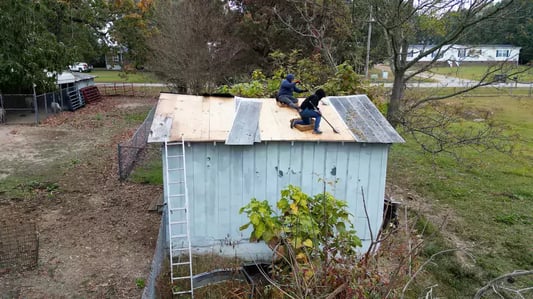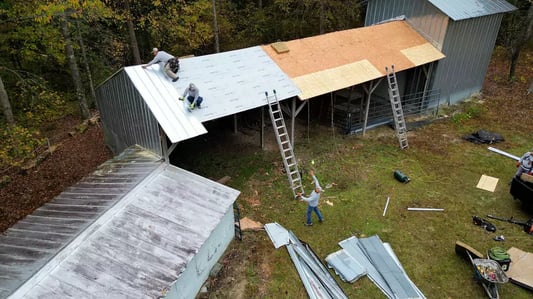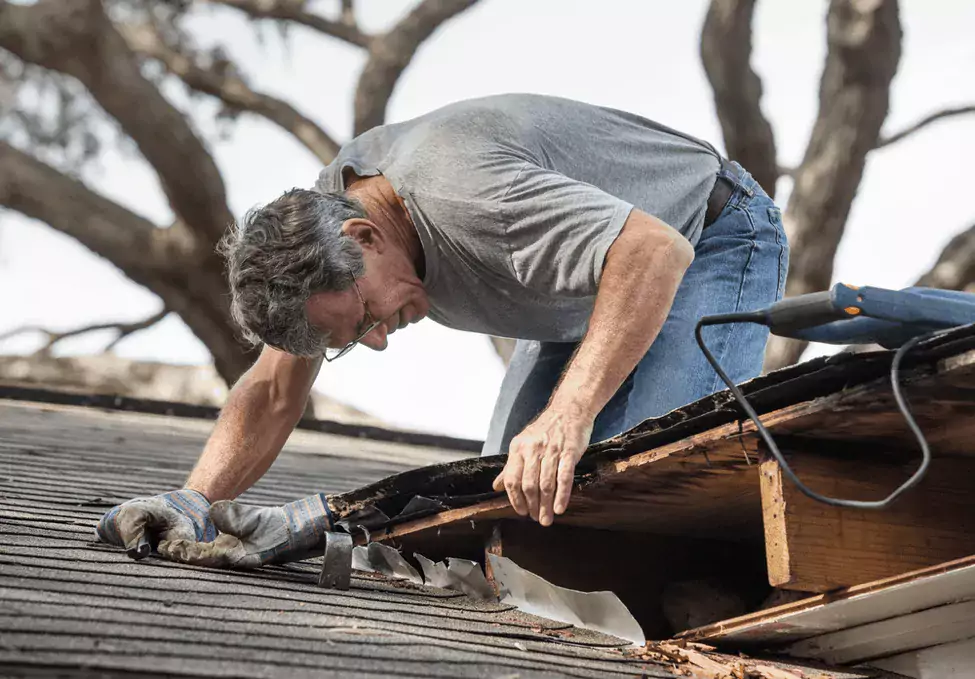What is a Mansard Roof?
Each and every time you think you know a lot about roofs, or what you’re planning on doing for a roof, some new roofing term comes out of nowhere to...
If you’re looking for a roof replacement, picking your material is a big part of the process, and a huge decision for the future of your home.
You may not think about your roof all the time, but you probably see it every day, out of the corner of your eye, at least. A roof that’s nice to look at, and installed properly, will last you a long time, and go a long way towards increasing the value of your home.
The options you have available to you will differ depending on where you live, but most areas of the country have companies that will install asphalt shingle, and metal panel roofs.
We’ve already gone over the process of installing an asphalt shingle roof, and though they share some steps, the way that a metal roof is installed is pretty different.
In this blog, we are going to talk about:
Let’s Get Started!
Before we dive into the materials that make up a standing seam metal roof, you need to have a good understanding of what a standing seam metal roof is.
A standing seam metal roof consists of multiple metal panels that lock together at the seams and are fastened underneath the panel, as opposed to being screwed through into the roof decking. This is done because metal tends to expand and contract as it heats and cools, and the fasteners being underneath allows the roof to flex naturally with this process.
So with that knowledge, we can talk about the individual bits that make up the roof system!
There are really six main steps that are involved in installing a standing seam metal roof: tearing off the old roof, installing the lock strips, laying ice and water shield/underlayment, putting on your metal panels, installing your Z-bar flashing, and finishing off the roof with a ridge cap.
Regardless of what kind of roof is going to go on your home, you’ll always need to remove the old roofing materials. Your roofing contractor will tear off all of the old shingles or metal, and replace any decking that needs to be replaced.

This step is super important because it allows for you to have a true idea of what damage has been done to your roof, and what the condition of the decking is. Some roofing contractors may offer to install a roof over top of the existing one, but be wary if they do. In several states, doing this is illegal, and even if it is in your area, we don’t recommend it.
Most of the time, these installations are not done correctly, and will lead to you needing a repair or replacement much sooner than you would have otherwise.
Once they're working with a clean roof deck, your contractor will start installing the lock strips and drip edge to prevent wind and water from getting up under your new metal panels.
These materials are usually installed at the eaves and rakes of your roof, or the horizontal and diagonal edges of the roof, respectively.
Next up, your contractor will install an underlayment or ice and water shield, which will help further waterproof your roof, and protect the decking from any potential leaks that may get through.
Underlayment is usually made of felt, while ice and water shield is often produced using asphalt. For metal roofs however, the ice and water shield that will be used is called high heat ice and water shield. This variety is made using a cotton-like fiber that won’t stick to the metal the same way asphalt would.

After everything has been prepared, it comes time for the first line of defense to be installed, the metal panels.
The first panel to be installed will be cut off at the seam and hooked onto the lock strip at one of the rake edges of your roof. Then, clips and screws will be used to fasten the panels to each other, and to the roof.
Once metal panels are covering the whole roof, the gap between them on the ridge of your roof will need to be filled in. The way this is done is by bending a piece of metal into a Z shape, making it slightly taller than the ribs of metal seams on your roof.
The Z bar does a great job of preventing water from getting up under the gap between the panels and the ridge cap, that is created by the seams on the roof being taller than the rest of the surface.
The last step will be to install your roof’s ridge cap, which will be of the same material, color, and look as your metal panels.
The ridge cap is pretty much exactly as it sounds, a section of metal designed to cover the section where your Z bar was just put in. They’re also used to create an additional layer of dimension on a roof, which most homeowners tend to find aesthetically pleasing. Once this is in, everything will be locked together, and the roof will be complete!
In this blog, we’ve talked a lot about how a standing seam metal roof is installed, but are there any other kinds of metal roofs out there?
Actually, yes! Another popular type of metal roofing material are screw-down panels, which are installed differently than standing seam panels. The primary difference here is that screws are driven down through the metal to secure it to the roof decking. This type of roof is very often installed over areas like barns and sheds, but isn’t usually recommended to be put over homes, or other heated spaces.
If you want to learn more about the differences between standing seam and screw-down metal roofs, read the blog we’ve written about that topic!
On Tops Roofing has been conducting metal roof replacements and repairs in the Raleigh, NC area for over 30 years! If you have any questions about getting a metal roof for your home, give us a call! We’ll be happy to help!
_WebP.webp)
Each and every time you think you know a lot about roofs, or what you’re planning on doing for a roof, some new roofing term comes out of nowhere to...
_WebP.webp)
From the ground, all you really see up on the roof are shingles that cover it, maybe some pipes or vents, and perhaps the gutters. However, as with...

What’s something above your head that you rarely think about? Your roof!